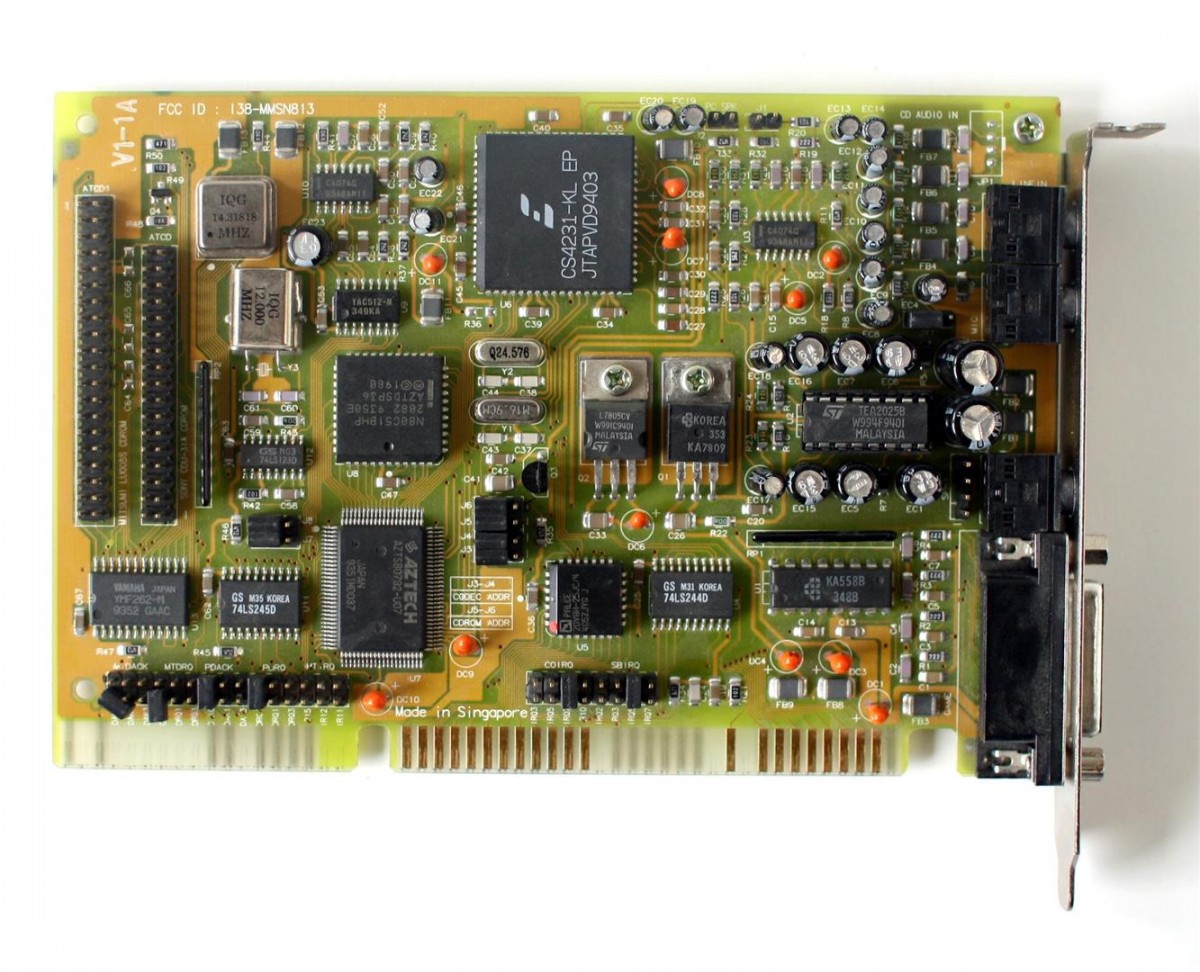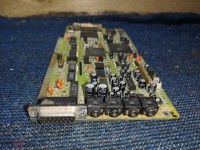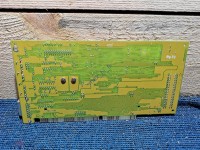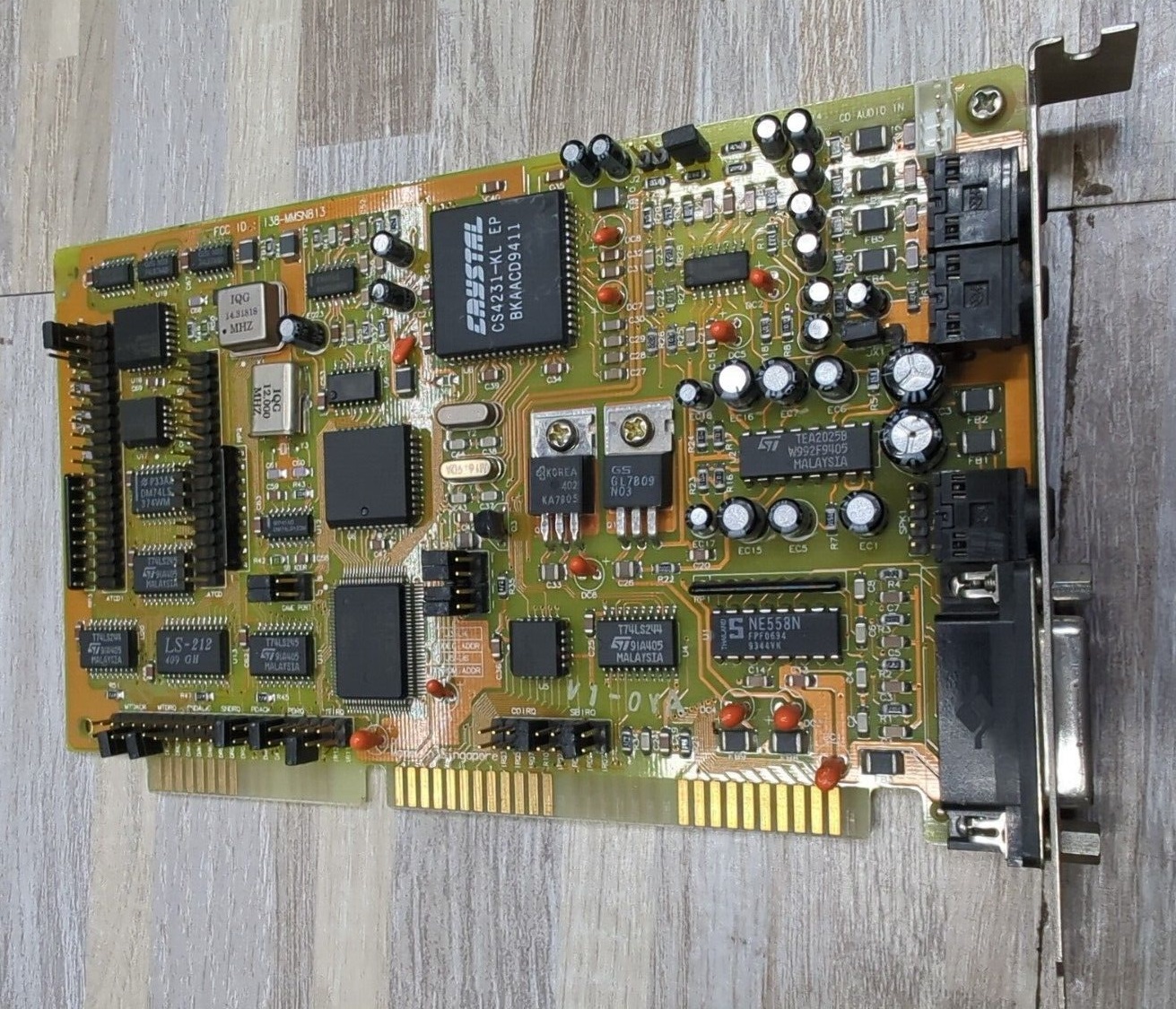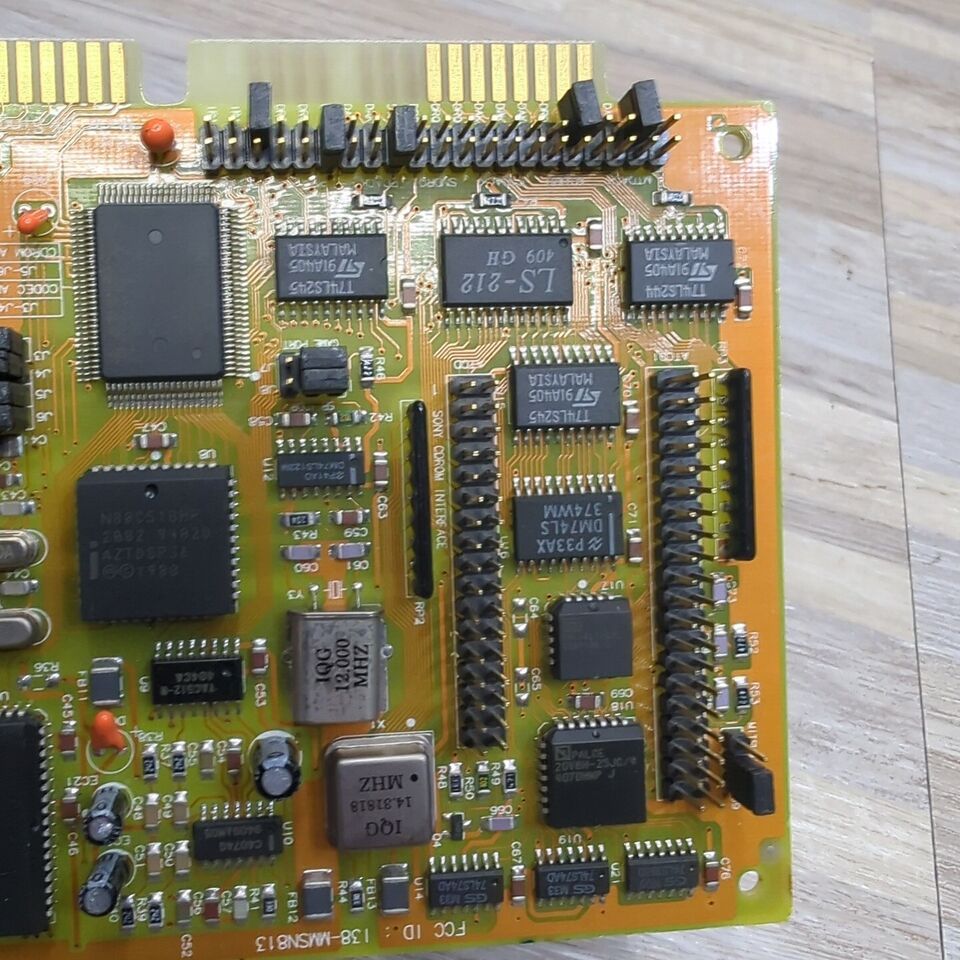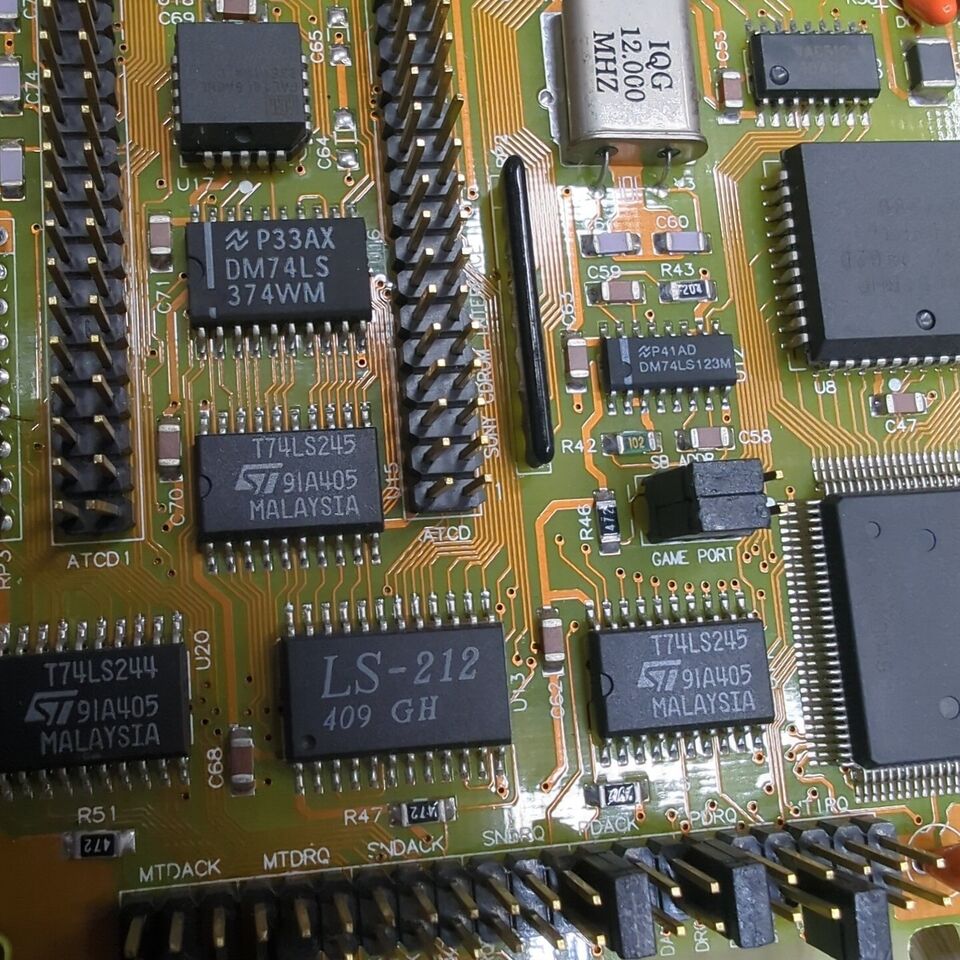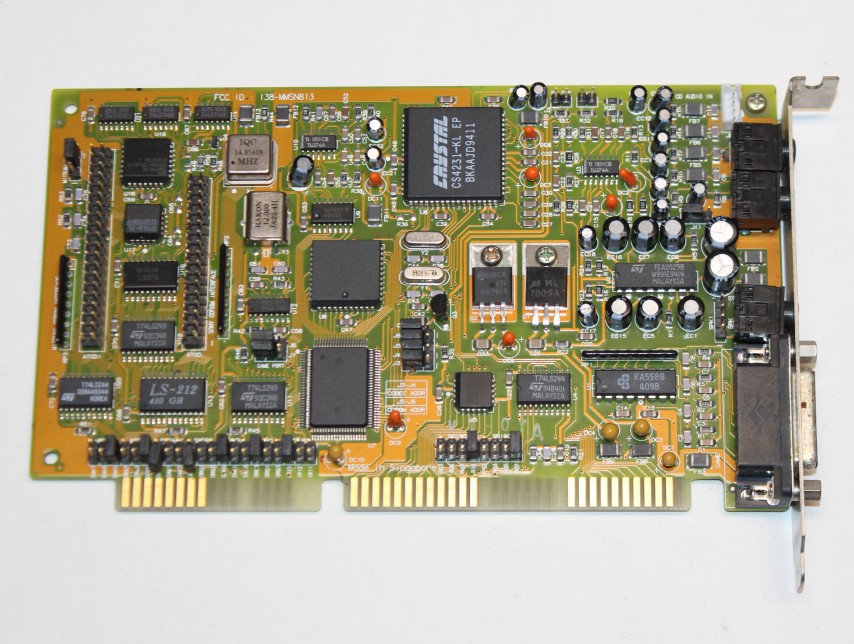Aztech Sound Galaxy Basic 16, Pro 16, Basic Audio 16
In 1994, Aztech released the Basic 16 sound card. Like many other 1st-generation cards, it supported Ad Lib, Sound Blaster 2.0, Sound Blaster Pro 2.0, Covox Speech Thing, Disney Sound Source, and Windows Sound System standards.
|
Released | 1994 |
| Bus | ISA 16-bit | |
| FM Synth | Yamaha YMF262 (OPL3) or LS-212 | |
| Audio Codec | Analog Devices AD1848, Crystal CS4231 or Crystal CS4248 | |
| Chipset | AZTSSPT0792-U07 (1st generation card) | |
| Standards | Ad Lib, Sound Blaster 2.0, Sound Blaster Pro 2.0, Covox Speech Thing, Disney Sound Source, Windows Sound System | |
| Ports | Speaker-Out, Mic-In, Line-In (stereo), Game port | |
| CD-ROM | Mitsumi/Panasonic (Basic 16/Pro 16) or Panasonic/Sony or Sony/IDE/Mitsumi (Basic Audio 16) | |
| Wavetable | Yes (Pro 16 only?) | |
| Plug & Play | No (but does use Auto-Init for DMA) | |
| FCC ID(s) | I38-MMSN810 (Basic 16/Pro 16), I38-MMSD813 or I38-MMSN813 (Basic Audio 16) | |
| Price | $137 (1994) | |
| See Also | Sound Galaxy NX Pro, Sound Galaxy NX Pro 16 |
Image above shows one variant of the Basic Audio 16 - a slightly different one can be seen further down.
The Sound Galaxy Basic 16, Pro 16 and Basic Audio 16 cards all support Ad Lib, Sound Blaster 2.0, Sound Blaster Pro 2.0, Covox Speech Thing, Disney Sound Source, and Windows Sound System.
The Basic 16 (I38-MMSN810) got Panasonic and Sony CD-ROM headers. The Basic 16 came bundled with Voyetra's AudioStation for Windows, SoundScript for DOS and Windows, and audio calendar, Say It voice annotation, voice mail for NetWare, WinDAT sound editor, Jukebox for playing .WAV, MIDI and CD music in the background, an audio screen saver, a DOS command-line MIDI player, and a collection of sound tracks.
Unlike the "NX Pro 16", the "Pro 16" cards did not get the 50-pin expansion connector.
The Basic Audio 16 (I38-MMSN813) came in two flavours. The Basic Audio 16A card came with an Analog Devices AD1848 or Crystal CS4248 codec, whereas the Basic Audio 16B card came with a Crystal CS4231. The software drivers differ accordingly. The Basic Audio 16 either got Panasonic and Sony CD-ROM headers or Sony and IDE (AT) CD-ROM headers. Interestingly, all of these cards appear to have a jumper to select a Mitsumi CD-ROM interface which presumably changes some of the signalling on the IDE header to work with Mitsumi drives.
Note that the Disney Sound Source / Covox Speech Thing module on the sound card has its own volume control in the Mixer control utility. You can either load the TSR and set the volume or use the DOS command line mixer control utility. The DSS/Covox module is enabled by default on the card but can be disabled via the SGCOX.exe program (with the /off argument).
If you hear muffled digital audio playback from anything games or apps using Sound Blaster or SB Pro mode, this can be fixed by choosing the Mono playback option in the mixer control utility.
None of these cards' MIDI/game ports is MPU-401 compatible. The Wave Blaster header (Basic 16 & Pro 16 only) is Wave Blaster-compatible but does not work under DOS.
Note also this these cards were designed to work in systems that ran a 486DX2-66. Using them today on much faster CPUs is known to cause problems (lockups or no playback at all - especially on CPUs with write-back cache).
Board Revisions
Several board revisions are known to exist:
I38-MMSN810 (Basic 16/Pro 16) - with Wave Blaster header and Panasonic and Sony CD-ROM interfaces.
I38-MMSD813 / I38-MMSN813 (Basic Audio 16) - no wavetable header, Panasonic and Sony CD-ROM headers or Sony and IDE (AT) CD-ROM headers
Competition
In the Media
Setting it Up
If you do not have an available parallel port at address 3BCH, 378H or 278H, then you can use the virtual parallel port jumpers (J4 and J5) to create a virtual parallel port at address 278H. To enable the virtual parallel port, make sure that pins 1-2 of both jumpers are closed (open them to disable). However, there is no need to enable the virtual parallel port if you have an available parallel port at the addresses as described above (just make sure nothing else is utilizing the same parallel port address).
Downloads
Operation Manual Get in touch if you can provide this missing item! |
Original DOS Utility Disk Expects to be run from a floppy disk with all files in root directory. If running INSTALL from a hard disk directory, use SUBST A: C:\<file location> and then run it from A: |
Windows 3.1 Driver Disk Includes drivers for FM synthesis, AUX, Wave/MIDI, and WSS 2.0 compatibility (undocumented) |
More Pictures
A variant of the MMSN813, courtsey of Andrew Welburn of Andys Arcade.
.jpg)
Another variant of the Basic Audio 16, this one having the slightly older but fully pin-compatible Crystal CS4248-KL instead.
Courtesy of DOS Days contributor Mike. This card came bundled with his Gateway 2000 P5-60 tower PC from January 1994.
